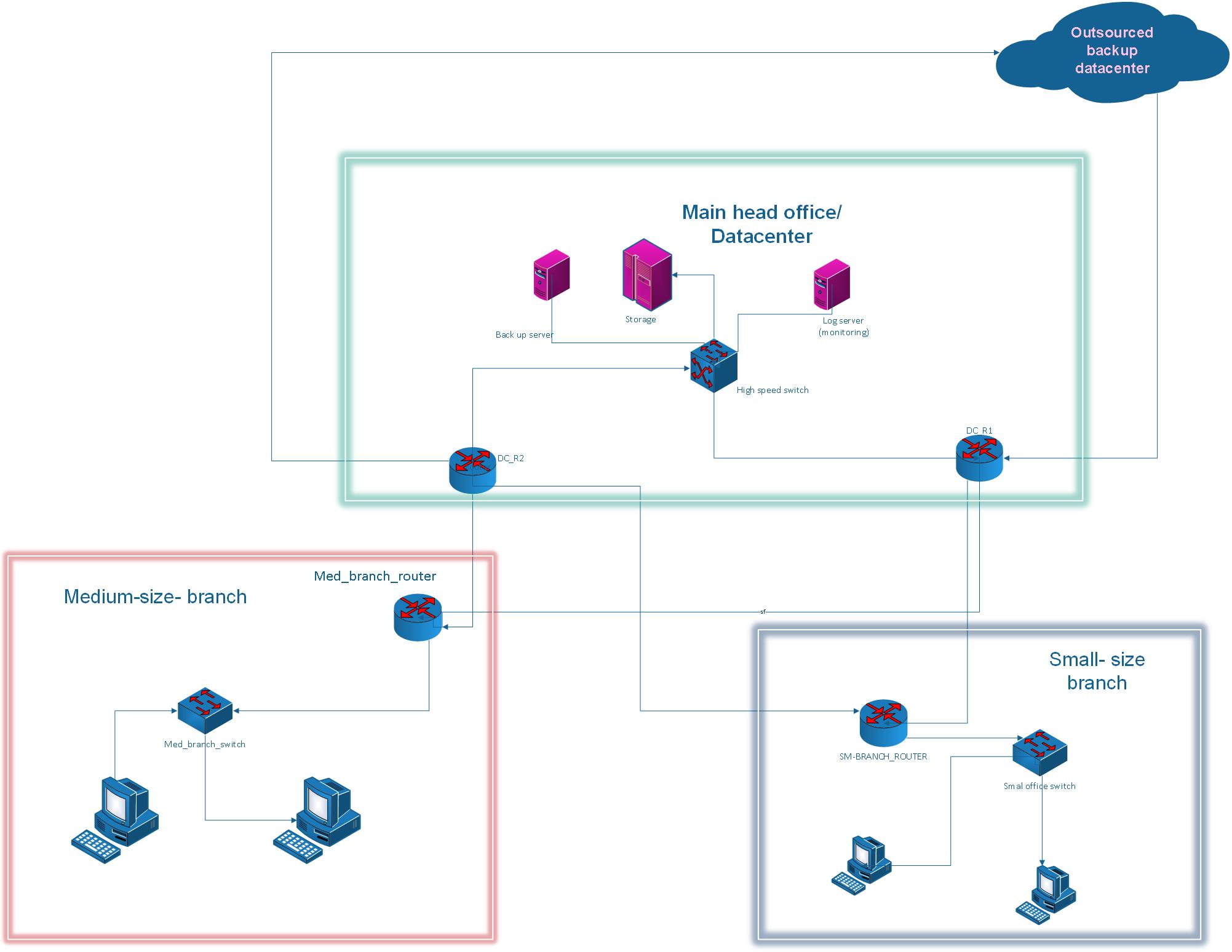Introduction
The rapid growth of data-driven enterprises has placed immense pressure on IT infrastructures to provide scalability, resilience, and security. Organizations increasingly adopt hybrid network architectures that blend on-premises infrastructure with cloud resources to support business continuity, disaster recovery, and secure backup operations.
This study presents a design and implementation of a Hybrid Data Centre Network tailored for outsourced backup operations, integrating on-premises servers, remote sites, and cloud-based backup infrastructure, ensuring low latency, secure communication, and high availability.
Research and Planning
Prior to implementation, the following research methodology was applied:
- Hybrid Network Models — Analysis of cloud and on-premises integration strategies.
- Backup & Disaster Recovery (BDR) — Redundancy models, data protection mechanisms, compliance requirements.
- Routing & Protocols — OSPF for dynamic routing; VPN GRE tunnels for secure connectivity.
- Security Measures — ACLs, encryption, network segmentation, and access control.
- Traffic Engineering — QoS for backup traffic prioritization while protecting production applications.
Key Considerations:
- Guaranteeing data integrity across all nodes.
- Achieving low-latency, high-availability backup operations.
- Maintaining enterprise-grade security and compliance.
- Ensuring scalability for future expansion and cloud adoption.
Implementation Overview
The hybrid network was implemented with:
- On-Premises Data Centre
- Core, Monitoring, and Backup servers
- Storage Area Network (SAN) devices
- Two Remote Sites
- Connected via serial links with high availability redundancy
- Cloud Data Centre
- VPN GRE tunnels with strong encryption and authentication
- Dynamic Routing
- OSPF for automatic route exchange and optimized paths
- Security
- ACLs on edge routers for access control
- Network segmentation to protect critical backup data
- Traffic Optimization
- QoS policies to prioritize backup traffic, ensuring production services remain unaffected
Tools Used:
- Cisco Packet Tracer for network simulation
- Microsoft Visio for topology design
IP Addressing Table (Optional)
Including the IP addressing table in your blog adds technical value and improves SEO for enterprise network queries. Screenshots can also be added for better engagement.
| Device | Interface | IP Address | Subnet Mask | Gateway |
|---|---|---|---|---|
| Core Router | Fa0/0 | 10.1.1.1 | 255.255.255.0 | N/A |
| Remote Router 1 | Fa0/0 | 10.2.1.1 | 255.255.255.0 | 10.2.1.254 |
| Remote Router 2 | Fa0/0 | 10.3.1.1 | 255.255.255.0 | 10.3.1.254 |
| Cloud Gateway | WAN | 192.168.10.1 | 255.255.255.0 | N/A |
Tip: Include screenshots of topology, routing tables, VPN tunnel status, and ACL verification. This boosts blog authority and visibility.
Challenges and Solutions
-
Challenge 1: Balancing backup vs. production traffic
Solution: Implemented QoS traffic prioritization to protect mission-critical applications. -
Challenge 2: Securing cloud connectivity
Solution: Configured VPN GRE tunnels with encryption and strong authentication. -
Challenge 3: OSPF instability across dual remote sites
Solution: Route summarization and optimized hello/dead timers minimized flapping. -
Challenge 4: Simulating enterprise-grade security in Packet Tracer
Solution: Used layered ACLs and test scenarios with multiple hosts to validate security.
Testing and Validation
- Connectivity: End-to-end ping/traceroute verification.
- Redundancy: Simulated link failures to confirm high availability.
- Security: Tested ACLs, VPN tunnels, and verified data encryption.
- Performance: Monitored QoS under peak backup loads.
Results
- 100% uptime during failover tests
- Secure encrypted transfers between on-premises, remote sites, and cloud
- Optimized traffic flows for backup operations without affecting production
- Future scalability with modular network design
Conclusion
The project demonstrates the importance of planning, security, and traffic optimization in hybrid networks. This architecture effectively integrates on-premises and cloud resources, delivering a robust, secure, and scalable backup platform for enterprise operations.
Download Configuration & Report:
Hybrid Data Centre Backup – Design & Implementation (Google Slides)
Network Topology Screenshot


